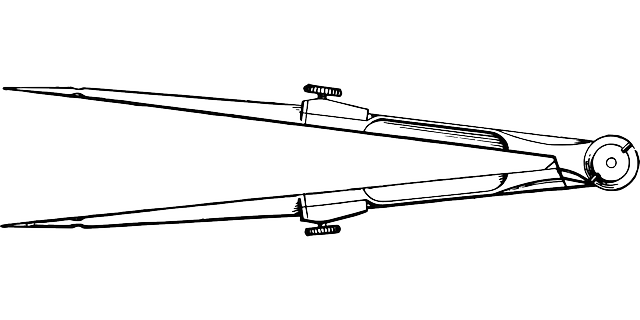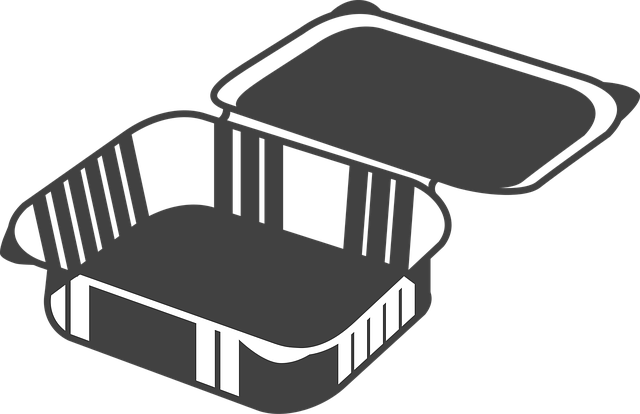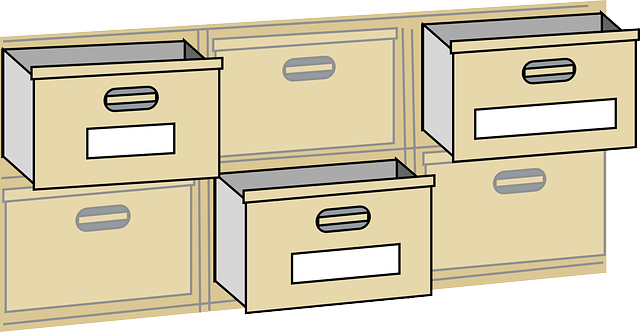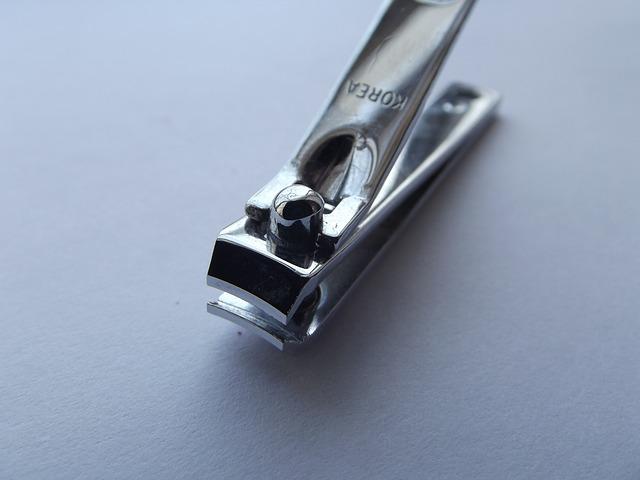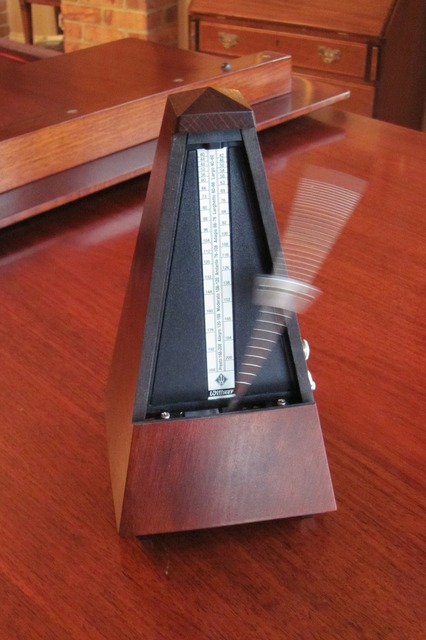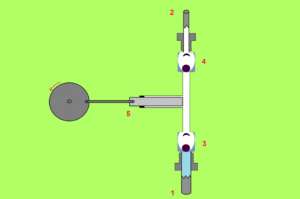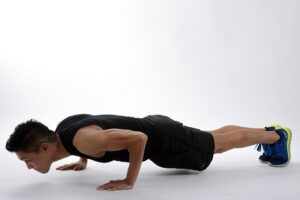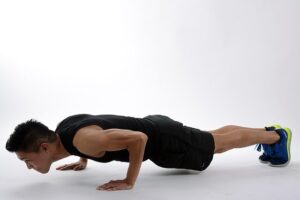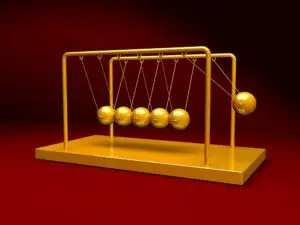Introduction to Newton’s Second Law of Motion
Newton’s Second Law of Motion is a fundamental principle in physics that helps us understand how objects move when a force is applied to them. This law, formulated by Sir Isaac Newton in the 17th century, provides a mathematical relationship between force, mass, and acceleration.
Definition of Newton’s Second Law of Motion
Newton’s Second Law of Motion states that the acceleration of an object is directly proportional to the net force acting on it and inversely proportional to its mass. In simpler terms, it means that the more force you apply to an object, the more it will accelerate, and the heavier the object is, the less it will accelerate for the same force.
Mathematically, this law can be expressed as:
F = m * a
Where:
– F represents the net force acting on the object, measured in Newtons (N).
– m represents the mass of the object, measured in kilograms (kg).
– a represents the acceleration of the object, measured in meters per second squared (m/s²).
Explanation of the Relationship between Force, Mass, and Acceleration
To understand the relationship between force, mass, and acceleration, let’s consider a simple example. Imagine you are pushing a shopping cart with a certain force. If you increase the force you apply, the cart will accelerate more. On the other hand, if you increase the mass of the cart, it will accelerate less for the same force.
This relationship can be further illustrated by examining the equation F = m * a. If we keep the force constant and increase the mass, the acceleration will decrease. Conversely, if we keep the mass constant and increase the force, the acceleration will increase.
For instance, if you push a small car with a force of 100 N, it will accelerate more than if you push a larger car with the same force. Similarly, if you push the same car with a force of 200 N, it will accelerate more than if you push it with 100 N.
In summary, Newton’s Second Law of Motion tells us that the acceleration of an object depends on the force applied to it and its mass. The greater the force or the smaller the mass, the greater the acceleration. Conversely, the smaller the force or the greater the mass, the smaller the acceleration.
Understanding this law is crucial in various fields, including physics, engineering, and sports. It allows us to predict and analyze the motion of objects in real-life scenarios, enabling us to design better vehicles, study the behavior of athletes, and much more. In the following sections, we will explore some practical examples of Newton’s Second Law of Motion in action.
Examples of Newton’s Second Law of Motion
Football Kicked

One example that demonstrates Newton’s Second Law of Motion is kicking a football. When a player kicks the ball, they apply a force to it. This force causes the ball to accelerate in the direction of the force applied.
The acceleration of the ball is directly proportional to the force applied and inversely proportional to the mass of the ball. In other words, the greater the force applied, the greater the acceleration of the ball. Similarly, if the mass of the ball is increased, the acceleration will decrease.
To calculate the force applied to the ball, we can use the formula F = ma, where F is the force, m is the mass of the ball, and a is the acceleration. By rearranging the formula, we can solve for force: F = ma.
Pushing the Table

Another example that illustrates Newton’s Second Law of Motion is pushing a table. When you push a table, the displacement of the table is in the direction of the applied force.
The force applied to the table causes it to accelerate in the direction of the force. The acceleration of the table depends on the force applied and the mass of the table. If a greater force is applied, the table will accelerate more. Conversely, if the mass of the table is increased, the acceleration will decrease.
Carrying Shopping Trolley
When you push or pull a shopping trolley, you are applying a force to move it. This is another example of Newton’s Second Law of Motion.
The force applied to the trolley determines its acceleration. If you push the trolley with a greater force, it will accelerate more. On the other hand, if you pull the trolley with a smaller force, it will accelerate less.
It is important to note that there is a difference between push and pull forces. When you push a trolley, the force is applied in the same direction as the motion. However, when you pull a trolley, the force is applied in the opposite direction of the motion.
Carrom Striker

In the game of carrom, when you strike the striker, it accelerates in the direction it is struck. This example also demonstrates Newton’s Second Law of Motion.
The force applied to the carrom striker determines its acceleration. If you strike the striker with a greater force, it will accelerate more. Conversely, if you strike it with a smaller force, it will accelerate less.
The distance traveled by the carrom striker is directly proportional to the force applied. In other words, the greater the force, the greater the distance traveled by the striker.
Pushing a Car

Pushing a car is another example that showcases Newton’s Second Law of Motion. When you apply a force to the car, it moves forward in the direction of the force.
The force applied to the car determines its acceleration. If you push the car with a greater force, it will accelerate more. On the other hand, if you push it with a smaller force, it will accelerate less.
The relationship between force, mass of the car, and acceleration can be described by the formula F = ma, where F is the force, m is the mass of the car, and a is the acceleration. By rearranging the formula, we can solve for acceleration: a = F/m.
Billiard Ball
When you strike a billiard ball with a cue stick, it accelerates in the direction of the force applied. This is another example of Newton’s Second Law of Motion.
The force applied to the billiard ball determines its acceleration. If you strike the ball with a greater force, it will accelerate more. Conversely, if you strike it with a smaller force, it will accelerate less.
The speed of the ball is directly proportional to the force applied. In other words, the greater the force, the greater the speed of the ball.
Hitting the Marble



When a force is incident on a marble, it displaces the marble from its position of rest. This is an example that demonstrates Newton’s Second Law of Motion.
The force applied to the marble determines the displacement it experiences. If a greater force is applied, the marble will be displaced further. Conversely, if a smaller force is applied, the displacement will be less.
In addition, when the marble is displaced, there is a transfer of kinetic energy from one marble to another. This transfer of energy is a result of the force applied.
Bowling Ball
When a force is applied to a bowling ball, it moves in the direction of the force. This is another example of Newton’s Second Law of Motion.
The force applied to the bowling ball determines its acceleration. If a greater force is applied, the ball will accelerate more. Conversely, if a smaller force is applied, the acceleration will be less.
The relationship between force and acceleration can be described by the formula F = ma, where F is the force, m is the mass of the bowling ball, and a is the acceleration. By rearranging the formula, we can solve for force: F = ma.
These examples demonstrate how Newton’s Second Law of Motion applies to various real-life scenarios. By understanding this law, we can better comprehend the relationship between force, mass, and acceleration in the world around us.
Pulling a Trolley Suitcase
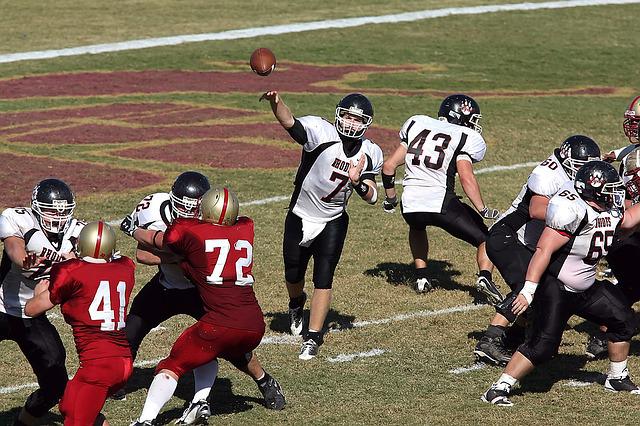
When it comes to understanding Newton’s second law of motion, it’s helpful to explore real-life examples that demonstrate how force, mass, and acceleration are interconnected. One such example is pulling a trolley suitcase. Let’s take a closer look at how this scenario exemplifies the principles of Newton’s second law.
Description of the Example
Imagine you’re at the airport, and you need to pull your trolley suitcase from the check-in counter to the boarding gate. The trolley suitcase is equipped with wheels, making it easier to transport. However, you still need to exert a force to set it in motion and keep it moving.
Explanation of How a Force is Applied to Pull the Trolley Forward
To pull the trolley suitcase forward, you apply a force in the direction you want it to move. This force is typically exerted by gripping the handle of the suitcase and pulling it towards you. As you pull, the force you apply is transmitted to the wheels, causing them to rotate. The rotation of the wheels propels the trolley suitcase forward.
Discussion of the Relationship Between Force, Mass of the Trolley, and Acceleration
According to Newton’s second law of motion, the acceleration of an object is directly proportional to the net force applied to it and inversely proportional to its mass. In the case of the trolley suitcase, the force you apply determines its acceleration. The greater the force, the faster the trolley will accelerate.
On the other hand, the mass of the trolley suitcase affects its acceleration inversely. If the trolley suitcase is heavier, it will require a greater force to achieve the same acceleration as a lighter suitcase.
In practical terms, this means that if you want to increase the acceleration of the trolley suitcase, you need to apply a greater force. Similarly, if you want to slow down or stop the trolley, you need to apply a force in the opposite direction.
Understanding how force, mass, and acceleration are related in the context of pulling a trolley suitcase helps illustrate the principles of Newton’s second law of motion. By applying this law, we can better comprehend the physics behind everyday actions and objects.
Sliding Window


Description of the Example
Imagine you are trying to slide open a stubborn window. You push against it with all your might, but it doesn’t budge. This everyday scenario can be explained using Newton’s second law of motion.
Explanation of How a Force is Applied to Slide a Window Open
Newton’s second law of motion states that the acceleration of an object is directly proportional to the force applied to it and inversely proportional to its mass. In the case of sliding a window open, you are applying a force to overcome the friction between the window and its frame.
When you push on the window, you are exerting a force in a specific direction. According to Newton’s second law, this force will cause the window to accelerate in the same direction. However, the window’s mass resists this acceleration, making it harder to slide open.
Discussion of the Relationship Between Force and Acceleration of the Window
The relationship between force and acceleration can be understood through the equation F = ma, where F represents force, m represents mass, and a represents acceleration. In the case of sliding a window open, the force you apply is directly related to the acceleration of the window.
If you increase the force you exert on the window, the acceleration of the window will also increase. This means that the window will slide open faster. Conversely, if you decrease the force, the acceleration and sliding speed of the window will decrease as well.
Explanation of How a Force is Applied to Lift a Stack of Books
Another example that demonstrates Newton’s second law of motion is lifting a stack of books. When you lift a stack of books off the ground, you are applying a force to overcome the gravitational pull on the books.
Discussion of the Relationship Between Force, Mass of the Books, and Acceleration
Similar to the sliding window example, the relationship between force, mass, and acceleration applies here as well. The force you exert to lift the stack of books is directly related to the acceleration of the books.
If you increase the force, the acceleration of the books will increase, causing them to lift off the ground more quickly. On the other hand, if you decrease the force, the acceleration and lifting speed of the books will decrease.
It’s important to note that in both examples, the mass of the object being moved affects the acceleration. The greater the mass, the more force is required to achieve the same acceleration.
In conclusion, Newton’s second law of motion provides a fundamental understanding of how forces and masses interact to produce acceleration. Whether it’s sliding a window open or lifting a stack of books, this law helps explain the relationship between force, mass, and acceleration in various real-life scenarios.
Dashing on a Boat

Description of the example
Imagine yourself on a boat, gliding through the calm waters of a lake on a sunny day. As you stand at the bow, you notice that the boat starts moving forward when you push against the railing. This simple action exemplifies Newton’s second law of motion.
Explanation of how a force applied to a boat causes it to move forward
When you push against the railing of the boat, you apply a force in the opposite direction. According to Newton’s second law of motion, the acceleration of an object is directly proportional to the force applied to it and inversely proportional to its mass. In this case, the boat’s mass remains constant, so the force you apply causes the boat to accelerate forward.
Discussion of the relationship between force, acceleration, and direction of motion
The direction of motion of the boat is determined by the direction of the force applied. In this example, when you push against the railing, the force is directed backward. However, according to Newton’s third law of motion, for every action, there is an equal and opposite reaction. Therefore, the boat moves forward in response to the backward force you exerted on the railing.
Explanation of how the gravitational force causes a fruit to fall downward
Let’s consider another example to understand Newton’s second law of motion. Imagine you are standing under a tree, and you pluck a ripe fruit from its branch. As soon as you detach the fruit, it falls straight down towards the ground.
This downward motion of the fruit is due to the force of gravity acting upon it. Gravity is a force that attracts objects towards each other. In this case, the Earth‘s gravitational force pulls the fruit downward, causing it to accelerate towards the ground.
Explanation of how a force is applied to roll a hula hoop on a surface
Now, let’s explore the motion of a hula hoop rolling on a surface. When you apply a force by pushing the hula hoop, it starts rolling forward. This motion can be explained using Newton’s second law of motion.
The force you apply to the hula hoop causes it to accelerate forward. The acceleration depends on the force applied and the mass of the hula hoop. The lighter the hula hoop, the easier it is to accelerate.
Discussion of the relationship between force, acceleration of the hoop, and direction of motion
The direction of motion of the hula hoop is determined by the direction of the force applied. When you push the hula hoop forward, the force is directed in the same direction. As a result, the hula hoop accelerates in the forward direction.
The acceleration of the hula hoop depends on the force applied and the mass of the hoop. The greater the force applied or the lighter the hula hoop, the greater the acceleration.
Explanation of how a force is applied to set a swing in motion
Have you ever enjoyed swinging in a playground? The motion of a swing can be explained using Newton’s second law of motion. When you push the swing, it moves forward and backward.
By applying a force to the swing, you cause it to accelerate in the direction of the force. The swing moves forward due to the force you exerted. As it reaches the highest point, the force decreases, causing the swing to decelerate and eventually reverse its direction.
Explanation of how a force is applied to blow out a candle
Blowing out a candle is a simple action that demonstrates Newton’s second law of motion. When you blow air towards the candle flame, it extinguishes.
The force you apply to blow air causes the air molecules to accelerate in the direction of the candle flame. As the air molecules collide with the flame, they disrupt the combustion process, leading to the extinguishing of the flame.
Discussion of the relationship between force, acceleration of air molecules, and extinguishing the flame
The force applied to blow air determines the acceleration of the air molecules. The greater the force, the higher the acceleration of the air molecules. When the accelerated air molecules collide with the flame, they disturb the balance of heat and oxygen required for combustion, resulting in the flame being extinguished.
Explanation of how a boomerang returns to the thrower
The boomerang is a fascinating example of Newton’s second law of motion. When thrown correctly, a boomerang not only travels in a curved path but also returns to the thrower.
When you throw a boomerang, you apply a force by giving it a spin. This spin creates an imbalance in the forces acting on the boomerang, causing it to accelerate and follow a curved path. The shape and design of the boomerang, along with the spin, generate lift and create an aerodynamic effect, allowing it to return to the thrower.
Discussion of the relationship between force, distance traveled, and acceleration
The force applied to the boomerang determines its acceleration. The greater the force, the higher the acceleration, which affects the distance traveled by the boomerang. Additionally, the design and shape of the boomerang play a crucial role in generating lift and allowing it to return to the thrower.
Explanation of how a force is applied to throw a dart
Throwing a dart is a classic example of Newton’s second law of motion. When you throw a dart, you apply a force by pushing it forward.
The force you apply to the dart causes it to accelerate in the direction of the throw. The acceleration depends on the force applied and the mass of the dart. The lighter the dart, the easier it is to accelerate, resulting in a faster throw.
Discussion of the relationship between force, acceleration of the dart, and direction of motion
The direction of motion of the dart is determined by the direction of the force applied. When you throw the dart forward, the force is directed in the same direction. As a result, the dart accelerates in the forward direction.
The acceleration of the dart depends on the force applied and the mass of the dart. The greater the force applied or the lighter the dart, the greater the acceleration, leading to a faster throw.
Frequently Asked Questions
How to calculate the force required to move an object with a given mass and acceleration?
When it comes to calculating the force required to move an object, Newton’s second law of motion comes into play. According to this law, the force acting on an object is directly proportional to its mass and acceleration. In other words, the force required to move an object is equal to the product of its mass and acceleration.
To calculate the force, you can use the formula:
Force = Mass x Acceleration
Let’s say you have an object with a mass of 5 kilograms and an acceleration of 10 meters per second squared. By plugging these values into the formula, you can calculate the force required to move the object:
Force = 5 kg x 10 m/s^2 = 50 Newtons
Therefore, the force required to move the object is 50 Newtons.
How to determine the net acceleration of an object under the influence of multiple forces?
When an object is under the influence of multiple forces, the net acceleration can be determined by considering the vector sum of all the forces acting on the object. The net acceleration is the overall acceleration experienced by the object due to the combined effect of all the forces.
To determine the net acceleration, follow these steps:
- Identify all the forces acting on the object.
- Determine the direction and magnitude of each force.
- Add up all the forces vectorially, taking into account their direction.
- Divide the resultant force by the mass of the object to obtain the net acceleration.
For example, let’s say an object is experiencing two forces: a force of 20 Newtons to the right and a force of 10 Newtons to the left. The mass of the object is 2 kilograms. To find the net acceleration:
- The force to the right is +20 N, and the force to the left is -10 N.
- Adding these forces vectorially, we get a resultant force of +10 N to the right.
- Dividing the resultant force by the mass of the object (2 kg), we find the net acceleration:
Net Acceleration = Resultant Force / Mass = 10 N / 2 kg = 5 m/s^2
Therefore, the net acceleration of the object is 5 meters per second squared.
Why do moving objects eventually come to rest?
According to Newton’s second law of motion, an object will continue to move at a constant velocity unless acted upon by an external force. This concept is known as inertia. Inertia is the tendency of an object to resist changes in its state of motion.
When a moving object comes into contact with a surface or encounters friction, it experiences a force that opposes its motion. This force is known as frictional force. Frictional force acts in the opposite direction to the object’s motion, gradually slowing it down.
As the object slows down, the force of friction increases until it becomes equal in magnitude to the force propelling the object forward. At this point, the net force acting on the object becomes zero, resulting in the object coming to rest.
Explanation of the factors contributing to an object’s equilibrium state of rest
An object is said to be in a state of equilibrium when the net force acting on it is zero. In other words, the object is either at rest or moving at a constant velocity. There are two main factors that contribute to an object’s equilibrium state of rest:
-
Balanced Forces: When the forces acting on an object are balanced, the net force is zero. This means that the forces are equal in magnitude and opposite in direction, canceling each other out. As a result, the object remains at rest.
-
Friction: Friction plays a crucial role in maintaining an object’s equilibrium state of rest. When an object is on a surface, the force of friction opposes the object’s tendency to move. The frictional force acts in the opposite direction to the applied force, preventing the object from sliding or moving.
For example, imagine a book placed on a table. The weight of the book is balanced by the normal force exerted by the table, resulting in a net force of zero. Additionally, the frictional force between the book and the table prevents it from sliding off.
In summary, an object’s equilibrium state of rest is achieved when the forces acting on it are balanced and when friction opposes its motion. These factors work together to keep the object at rest.
Frequently Asked Questions
Q: What is Newton’s second law of motion?
A: Newton’s second law of motion states that the force acting on an object is directly proportional to the mass of the object and the acceleration produced. It can be mathematically represented as F = ma, where F is the force, m is the mass, and a is the acceleration.
Q: What information do you get from Newton’s second law of motion?
A: Newton’s second law of motion provides information about the relationship between force, mass, and acceleration. It allows us to calculate the force acting on an object or determine the acceleration produced by a given force.
Q: Can you explain Newton’s second law of motion with an example?
A: Sure! Let’s consider an example where a car of mass 1000 kg experiences a force of 500 N. Using Newton’s second law of motion (F = ma), we can calculate the acceleration of the car. Substituting the values, we get 500 N = 1000 kg * a. Solving for a, we find that the acceleration is 0.5 m/s^2.
Q: What are some examples of Newton’s second law of motion in everyday life?
A: Some examples of Newton’s second law of motion in everyday life include pushing a shopping cart, kicking a football, or riding a bicycle. In each case, the force applied determines the acceleration produced based on the mass of the object.
Q: Can you provide some examples of Newton’s second law of motion in sports?
A: Certainly! Examples of Newton’s second law of motion in sports include throwing a baseball, hitting a tennis ball, or kicking a soccer ball. The force applied to these objects determines their acceleration, allowing them to move in the desired direction.
Q: What are some practical examples of Newton’s second law of motion?
A: Practical examples of Newton’s second law of motion include launching a rocket into space, propelling a car forward, or stopping a moving object. In each case, the force applied determines the resulting acceleration or deceleration.
Q: How can Newton’s second law of motion be applied in engineering?
A: Newton’s second law of motion is applied in engineering to design and analyze various systems. It helps engineers calculate forces, determine accelerations, and optimize designs for efficiency and safety.
Q: Are there any real-life examples of Newton’s second law of motion?
A: Yes, there are numerous real-life examples of Newton’s second law of motion. Some examples include a person jumping off a diving board, a rocket launching into space, or a car accelerating on a highway. In each case, the force applied determines the resulting acceleration.
Q: Can you provide some examples of Newton’s second law of motion in physics?
A: Certainly! Examples of Newton’s second law of motion in physics include the motion of a pendulum, the behavior of a falling object, or the motion of a satellite orbiting the Earth. In each case, the force applied determines the resulting acceleration.
Q: How can Newton’s second law of motion be used to solve problems?
A: Newton’s second law of motion can be used to solve problems by applying the formula F = ma. By identifying the known values of force, mass, or acceleration, we can calculate the unknown quantity using algebraic manipulation.
Also Read:
- First law of motion examples
- Centripetal force in circular motion
- Projectile motion examples
- Oscillatory motion examples
- Passive range of motion examples
- Displacement in circular motion
- Simple harmonic motion examples
- Two dimensional motion examples
- Periodic motion vs simple harmonic motion
- Vibratory motion examples









